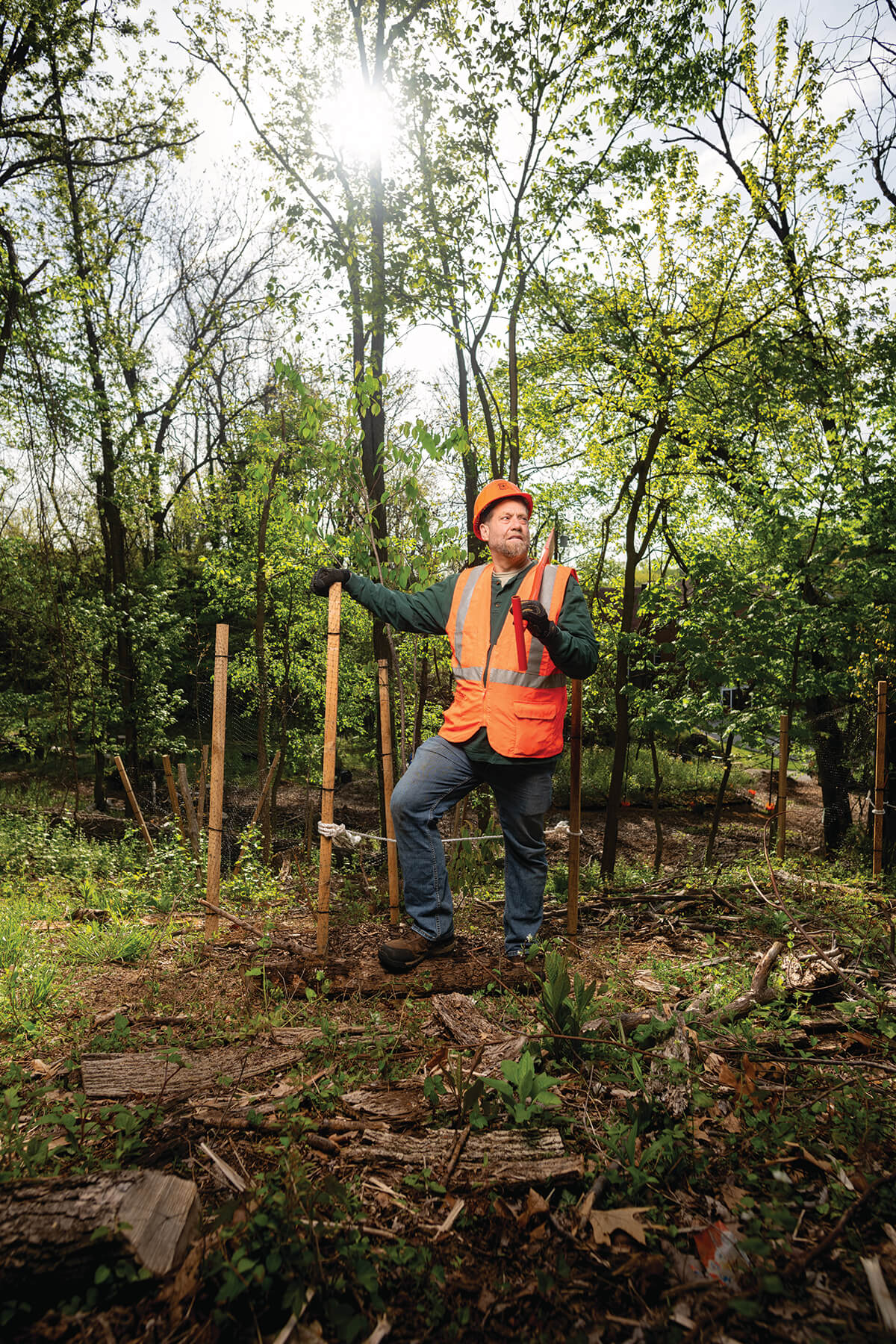GameChangers
GameChanger: Morgan Grove
We catch up with the research forester with the Baltimore Field Station and U.S. Forest Service.

With such a last name, it’s no surprise that Morgan Grove has spent his life’s work surrounded by trees. Particularly trees in cities, studying their relationships with communities. A U.S. Forest Service research scientist at the Baltimore Field Station since 1996, his decades of experience have culminated in the Stillmeadow PeacePark, a collaboration with the Stillmeadow Community Fellowship church to restore 10 acres of dying overgrown woods into a public green space. We spoke with Grove about his career and what these trees could mean for Baltimore.
With the Forest Service, you typically think of big parks far away from city centers—how did you get interested in the ecology of urban areas?
I’m a mission-oriented person; I want to make the world better. My parents were Peace Corps volunteers in 1962. We’re working with communities, trying to identify their problems, tap into their capacities, and make their lives better in conjunction with the environment. There’s a lot of opportunity to help Baltimore be a better Baltimore, and a crucial piece of that is the environment.
Tell us about the Stillmeadow project.
We’re working to set up what one might think of as experimental forest. We’re working with the church to think about how they want to not only restore forest, but also play a role in revitalizing the community.
What is an experimental forest?
There are actual experiments underway, associated with a challenge that a great deal of this region faces, which is forested areas that have not been managed. They’ve become overgrown with invasive plants and vines. That reduces the ability of the natural forest to regenerate. We’re testing out the best practices for reestablishing healthy, climate-adapted forests, as inexpensively as possible.
What are some of the experiments underway?
We have two different fast-growing tree species—hybrid poplar and willow—and four different genotypes of each. We’re seeing which do best. We’re seeing if woodchips reduce competition for native plants and increase moisture retention in the soil. Over time, we also want to look at the effects on insect, bird, and bat communities. How does their interactions change over time? And there are a variety of social aspects we’d like to understand. How do people start to use the forest? How does it make them feel? Does it change their stress levels? Does it change the way they interact? How does it contribute to other communities feeling like, hey, we can do this, too?
What is the importance of forest canopy to urban areas?
I would start with beauty. Trees make our cities more beautiful. They help cool them, they help solve our water runoff problems. They support neighborliness. People actually drive slower down treelined streets. Do you want to live in a city without trees?
There are, of course, neighborhoods with less access to trees. How do we see that intersect with environmental injustice in Baltimore?
The big one, now and into the future, is going to be heat—the main environmental killer of people. Trees play both a biophysical role and a social role in reducing vulnerability to heat. They help cool places through both evapotranspiration and shade. They help build community as people tend to be outside more, or maybe they helped plant them. There’s a whole host of problems associated with that vulnerability, including chronic issues like stress and air quality, as well as catastrophic events.
Like extreme weather. With sea-level rise a concern in Baltimore, how do trees help mitigate climate-related flooding?
Water runs across land, and soil is like a dry sponge with water-holding storage capacity that can reduce flooding by delaying that big pulse. One way to dry out the soil proactively is through trees, which you can think of as water pumps. They push water out of the soil through the atmosphere and maintain that storage capacity. When you don’t maximize that capacity, in the case of Baltimore, the water goes across impervious surfaces in the storm drains and then into the streets.
How can looking at a city through an ecological lens increase its resiliency?
A key piece is building social cohesion. We say in forestry, do we plant trees to organize people, or do we organize people to plant trees? The answer is yes.